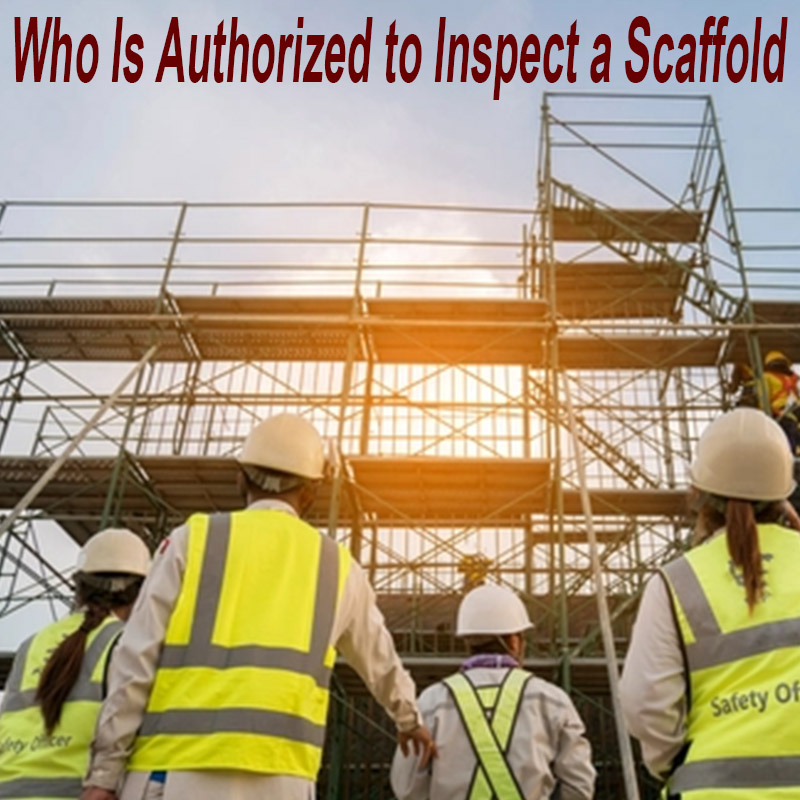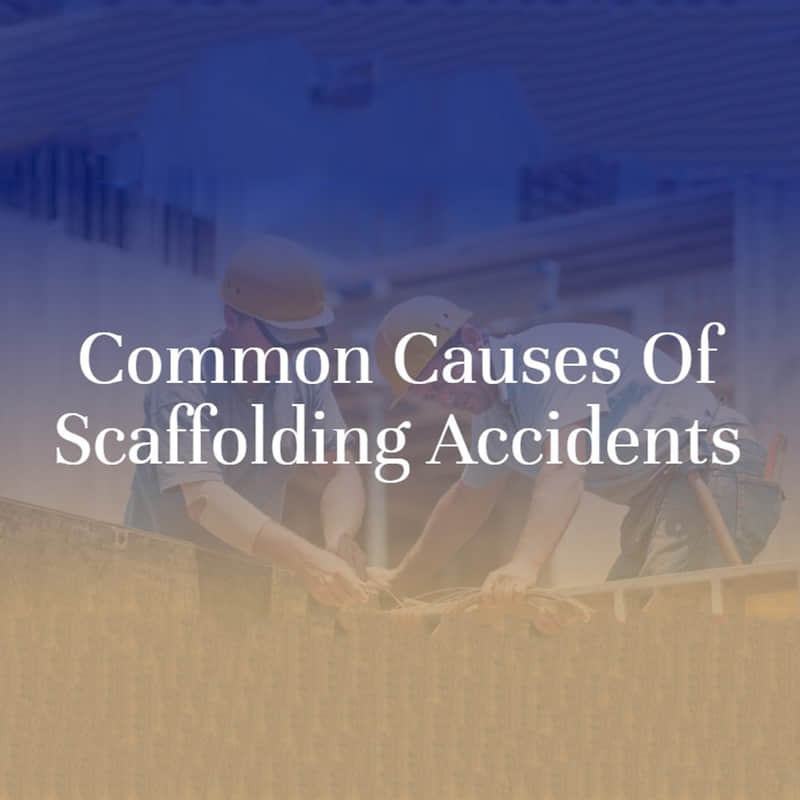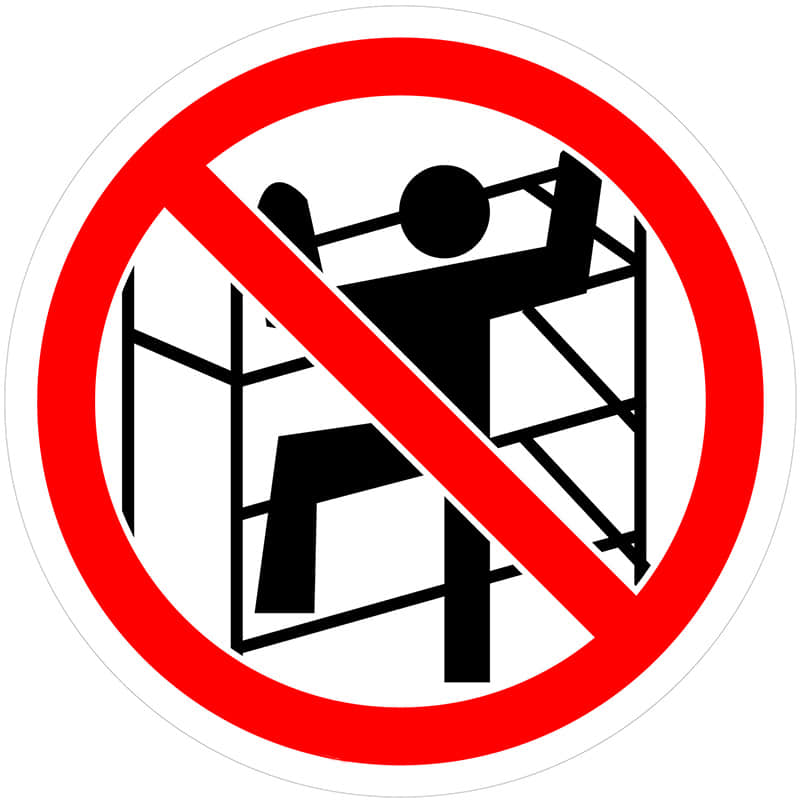Which Factors Cause Most Accidents On Scaffolds
Apr 18, 2025
Why Scaffold Safety Matters
According to the Occupational Safety and Health Administration (OSHA), scaffold-related accidents cause two percent of fatal accidents and approximately 4,500 injuries each year in the U.S. Scaffold incidents bring a lot more than human costs which incur heavy costs, including but not limited to medical expenses, legal costs, and liquidated damages for delayed work, etc. Identifying and mitigating causes of scaffold accidents has many advantages, including protecting workers, promoting productivity and maintaining relevancy with safety standards.
Major Factors Causing Scaffold Accidents
There are so many reasons that scaffold accidents happen - the relationship and combination of human error, equipment failure, and unsafe safety practices. Below we will highlight and describe the main causes along with the descriptions, actual consequences, and contributing factors.
1. Manufacturing Negligence
Scaffolding parts (tubes, couplers, brackets, & guardrails) are required to meet higher quality standards and testing to ensure structural integrity. Manufacturing negligence can happen when an effort is made to cut costs, inferior materials, or not enough quality control in the manufacturing process. Poorly constructed or defective parts can result in inadequately constructed scaffolding that will more than likely lead to scaffolding instability.
Consequence - Defective parts can cause a sudden scaffold collapse or loss of stability, which could be devastating for the worker at height.
Contributing factors - Use of lower-grade steel, improper welding procedures, or failure to test performance of parts under load conditions.
Example - As an example, a poorly welded coupler may break due to stress causing a portion of the scaffolding to collapse.
2. Scaffold Design Defects
Even when manufactured correctly, scaffolds with flawed designs can fail to perform safely. Design defects may include insufficient load-bearing capacity, improper bracing configurations, or failure to account for environmental factors such as wind loads, seismic activity, or uneven terrain.
Impact: Poorly designed scaffolds may tip, sway, or collapse under normal construction activities, endangering workers and bystanders.
Contributing Factors: Inadequate engineering analysis, outdated design standards, or lack of site-specific customization.
Example: A scaffold designed without sufficient diagonal bracing may become unstable in high winds, leading to a collapse.
3. Unacceptable Construction
Scaffolds that are improperly built or constructed stand out as one of the main causes of accidents. Construction of scaffolds can go wrong due to different reasons: forgetting to fully secure components, using parts that aren’t compatible, failure to follow information provided by manufacturers as well as erecting scaffolds on unstable work surfaces.
Impact: Improperly constructed scaffolds are more susceptible to being unstable, change position or even fail completely when they are loaded.
Contributing Factors: Shortened assembly times can be put down to project time constraints and/or add labour constraints and/or reduced supervision.
Example: When scaffolds are not properly anchored to the building, the force of workers using the scaffold, and in particular if they are using tools, may be enough to allow the scaffold to shift position even if the workers themselves did not, causing the workers to lose their balance.
4. Insufficient Scaffold Maintenance
Scaffolds are exposed to harsh conditions, including weather, heavy loads, and prolonged use, which can cause wear, corrosion, or structural fatigue. Failure to inspect and maintain scaffolds regularly allows minor issues, like rusted tubes or loose bolts, to escalate into major hazards.
Impact: Neglected scaffolds become progressively weaker, increasing the likelihood of sudden failures or collapses.
Contributing Factors: Lack of maintenance schedules, untrained inspectors, or prioritizing cost savings over safety.
Example: Corroded scaffold tubes may buckle under load, causing a platform to give way and workers to fall.
5. Weak or Inadequate Plank Support
Scaffold planks provide the working surface for workers, and they must be stout enough to support the weight of the worker, tool, or materials. Weak planks, improper installation, insufficient overlap, or using non-scaffold grade materials, can result in plank failure.
Impact: Planks can break, shift or slip and depending on the cause, could result in a worker falling, or workers dropping heavy objects that could injure someone.
Contributing Causes: Make-shift planks (i.e. regular lumber), overloading platforms, and poor securing of planks
Example: A plank that does not have thickness sufficient may crack under the weight of multiple workers resulting in a worker falling.
6. Lack of Adequate Worker Training
Workers who are not properly trained in scaffold erection and use, as well as safety practices, are more likely to make mistakes that cause accidents. What does a lack of training mean? It could mean that workers do not know the types of scaffolds, load limits, fall protection systems, hazards involved, etc.
Impact: Workers who are not trained may neglect safety steps or the proper use of scaffolds which elevates their risk for accidents.
Contributing Factors: When there is a lot of worker turnover (poor retention), language barriers or when budgets don't allocate enough for training.
Example: A worker may not know that there is a load limit on a scaffold, and they pile materials on it until it collapses.
7. Inadequate Safety Equipment
The lack or improper use of personal protective equipment (PPE), and scaffold safety features (guardrails, toeboards, netting, fall arrest systems, etc.) almost certainly increases the risk of an accident. Safety equipment is essential in terms of minimizing falls and from being hit by falling objects.
Impact: The lack of proper safety measures means the workers are at an even higher risk for death or serious injury.
Contributing Factors: Cutting costs, lack of enforcement, or workers do not want to use PPE because of discomfort.
Example: A scaffold does not have guardrails making it easy for a worker to fall when he/she is much higher than his/her waist from the ground.
8. Untrained, Inexperienced, or Negligent Coworkers
Accidents can occur when coworkers lack experience, disregard safety protocols, or act carelessly. This includes failing to communicate hazards, removing safety features, or engaging in unsafe behaviors like horseplay.
Impact: One worker’s negligence can create hazards that endanger the entire team.
Contributing Factors: Poor team coordination, lack of accountability, or cultural attitudes prioritizing speed over safety.
Example: A worker who removes a guardrail to access materials and fails to replace it creates a fall hazard for others.
9. Disregard for Scaffold Safety Standards
Ignoring OSHA regulations (e.g., 29 CFR 1926.451), industry guidelines, or manufacturer recommendations leads to unsafe scaffold conditions. This includes bypassing inspections, overloading scaffolds, using damaged components, or failing to implement fall protection.
Impact: Non-compliance increases accident risks and exposes companies to legal and financial penalties.
Contributing Factors: Lack of regulatory awareness, inadequate oversight, or intentional cost-saving measures.
Example: Failing to conduct daily scaffold inspections may allow undetected defects, like loose bolts, to cause a collapse.
How to Prevent Scaffold Accidents
Preventing scaffold accidents requires a proactive approach combining quality equipment, training, and compliance. Below are streamlined strategies to enhance safety.
1. Use High-Quality Scaffolding
2. Ensure Proper Erection
3. Conduct Regular Inspections
4. Use Strong Planks
5. Train Workers
6. Provide Safety Gear
7. Promote Safety Culture
8. Comply with Standards
Conclusion
Scaffold accidents are preventable, caused by things like manufacturing defects, and poor construction and training. Scaffold accidents can be avoided by implementing specific prevention measures. If construction companies utilize the right scaffolding equipment, know how to safely assemble scaffolding, and can create a safety-first mentality, scaffold accident prevention can be addressed to prevent scaffold accidents with less effort and free from changes in behavioral modifications. Consult OSHA scaffold regulations or a safety professional for more direction. Please share this guide with others, so we can make construction sites safer and reduce scaffold accidents.
FAQ
How often should scaffolds be inspected?
OSHA requires scaffolds to be inspected before each work shift and after any event that could affect their integrity, such as heavy rain or structural alterations. Daily inspections are standard practice.
What are the penalties for ignoring scaffold safety regulations?
Non-compliance with OSHA regulations can result in fines, project shutdowns, and legal liabilities. Penalties vary based on the severity of the violation, with serious violations costing up to $16,131 per instance (as of 2025).
Read More
Scaffold Injuries —— Findlaw
Scaffold Accidents —— Cross and Smith


